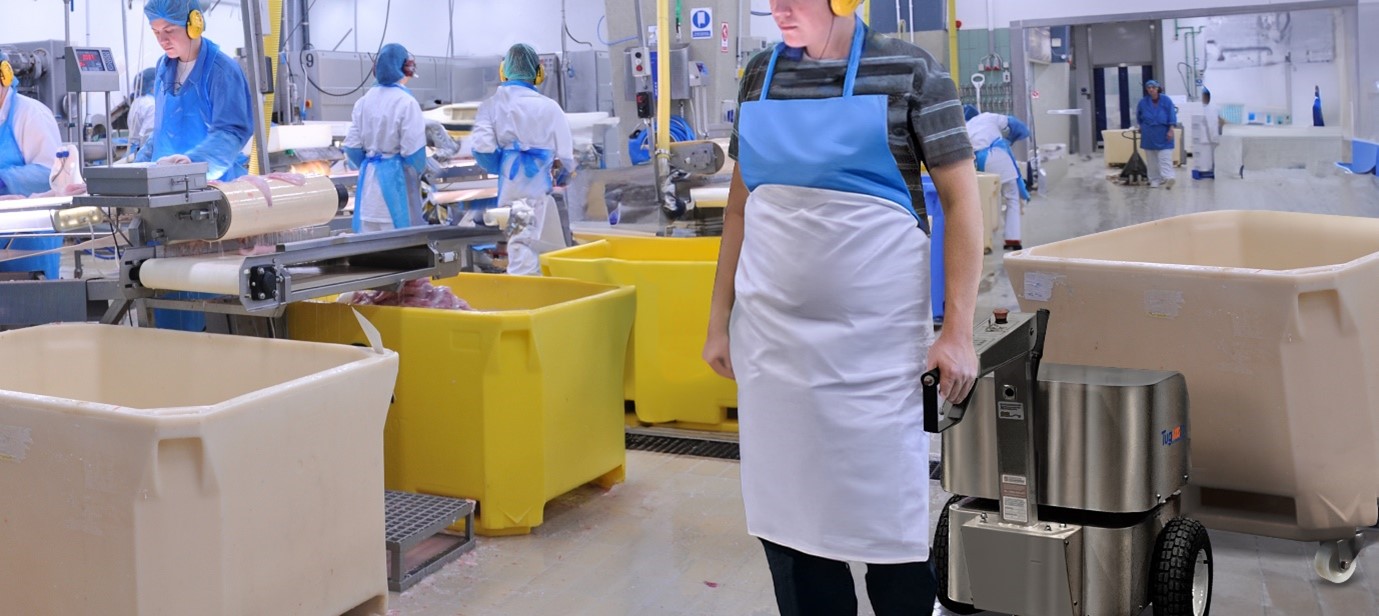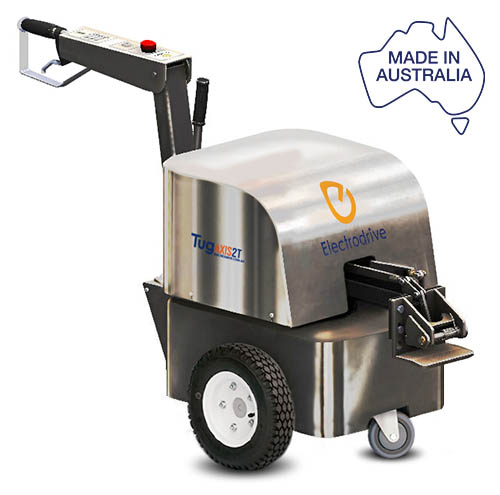
The benefits of stainless steel tugs in the food and beverage industry
March 2024
Improving Workplace Safety and Hygiene in Food and Beverage Manufacturing
In the fast-paced world of food and beverage manufacturing, ensuring workplace safety is an essential aspect of operations. Manual handling tasks, such as lifting, pushing, or pulling heavy loads, often pose significant risks to staff and the employer – in terms of injury, downtime, and financial costs. In Australia, a staggering half-a-million individuals were affected by work-related injuries and illnesses in 2023 alone! Food services was one of the industries with the highest work-related injury rate (per 1,000 workers), with manual lifting, pushing, pulling, and bending being the most common cause. On top of this, corrosion and contamination are also substantial problems. Recent research conducted by Curtin University highlights the immense cost associated with rust and corrosion in Australia, estimating it to be as high as $32 billion annually.
Cleaning and sanitisation
The extensive requirements for cleaning and sanitisation when working within the food manufacturing industry include the use of high-pressure water often in combination with various corrosive agents. These harsh substances require the use of the corrosion-resistant alloys, such as stainless steel, to withstand the constant exposure. If the wrong materials are used (non-stainless-steel), then corroded particles could break-off and potentially contaminate food sources. This is a major concern when millions of dollars of produce are at stake, not to mention the production downtime, cost, and brand damage if there were to be a food recall.
Food recalls
The implications of a food recall due to equipment contamination can be catastrophic for any business, leading to severe financial repercussions and damage to brand reputation. Between 2013-2022 there were 194 food recalls due to microbial contamination. And according to FSANZ’s annual report, the number of food recalls in Australia has increased. In the year 2023 alone, there were 93 food recalls (up from 79 in 2021–22) and above the 10-year average of 79. The most significant portion was attributed to undeclared allergens and microbial issues. And one of the top sources of microbial contamination is caused by equipment!
Choose the right equipment
Hence, the right equipment is crucial when the risk is so substantial. Companies can mitigate such risks, ensuring the integrity of their products and safeguarding consumer trust. Stainless steel with its hygienic properties is the obvious choice of the food industry to prevent equipment damage and food contamination. Stainless steel is unable to absorb grease, food particles and water. It can be effectively cleaned and sanitised under harsh environments. It is an ideal choice for food contact surfaces, offering a combination of corrosion resistance, hygiene, durability, and regulatory compliance is essential for ensuring the safety and quality of the food products.
It is also crucial to use specific materials handling equipment as pH levels of various foods and beverages such as carbonated drinks, beer, soups, jams, juice, sauces, and pickled vegetables can significantly impact their corrosive properties, especially when they encounter metal surfaces during processing, transporting or storage.
Enzymes present in food products can indeed contribute to corrosion, as they can catalyse chemical reactions that accelerate the degradation of metal surfaces. Similarly, microbial contamination of surfaces can promote corrosion by producing corrosive by-products or creating localised corrosion environments. Even the slightest particle has the potential to trigger significant recalls.
Electrodrive's stainless steel tug
Recognising the unique challenges faced by food and beverage manufacturers, Electrodrive has specifically designed the Tug Axis 2T Stainless Steel Tug. Unlike traditional tugs susceptible to bacterial buildup (and the powder-coat surfaces eroding from harsh chemical washdowns), the stainless steel surface of the Tug Axis 2T prevents the accumulation of contaminants, making it the ideal choice for environments where hygiene and the risk of contamination is non-negotiable.
The Stainless Steel Tug Axis 2T is engineered from grade 304 stainless steel and offers resilience against corrosion. With the capacity to handle loads of up to 2,000 kg, this battery-powered tug empowers users to manoeuvre heavy loads with ease, significantly reducing the risk of strain or injury caused by manual handling. Its durable construction ensures longevity even in the most challenging industrial, wet, or humid environments, and it can withstand regular cleaning and sanitising.
Moreover, Electrodrive offers more than just equipment – we provide site assessments to identify potential manual-handling hazards and can offer the right powered mobility solutions to meet specific applications. This approach not only enhances workplace safety but also fosters operational efficiency, helping to contribute to a safer work environment.
Contact us today
Don't risk hefty fines or compromise on safety. Get in contact today!
Case study
Check out our case study to see how an Electrodrive's stainless steel tug helped a commercial bakery.

Sources
https://www.paint.org/coatingstech-magazine/articles/corrosion-prevention-food-processing-facilities
https://www.foodstandards.gov.au/food-recalls/recallstats
https://www.foodsafetynews.com/2023/11/australian-food-agency-details-2022-23-highlights-in-annual-report
https://www.nchasia.com/en-au/chemical-advancements-in-rust-and-corrosion-solutions-could-save-building-construction-industry-millions
https://www.safeworkaustralia.gov.au/sites/default/files/2023-04/safe_work_australia_analysis_of_abs_work-related_injuries_data_0.pdf